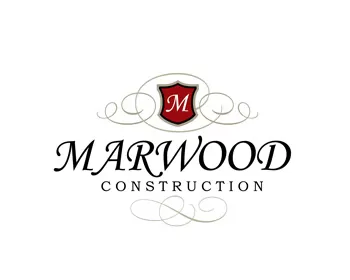It has been more than 6 months since Hurricane Harvey’s impact devastated Houston area homes. During this time homeowners have fought with insurance companies, waited for repair contractors and tried to justify rebuilding their homes. Harvey was not just a hurricane, it was an economic game changer dropping upward of 50+ inches of rain water over a concentrated area of metro Houston in a 5 day period without relief.
Houston is not new to pocket areas of flooding in the past. Houston has experienced 3 – 500 year floods in the past 3 years. Harvey in 2017, and Memorial Day floods in 2015 and the tax day flood in 2016. Statistically speaking the odds of experiencing 3 years of 1 in 500 chance of flood level rains is mind boggling. It is due to these staggering statistics that has homeowners questioning do they want to chance going through another horrific event like Harvey again.
Primary Areas of Houston Affected by Flooding
Although collectively more than 80,000 Houston homes took on some amount of flood water, there were parts of the city that were severely affected more substantially than others, but for different reasons. The Meyerland and Bellaire areas of Houston have a history of flooding. The local officials have recognized the need to change the required height of finished floor elevations for new homes foundations. Local building codes are requiring new home finished floor levels to be 24 inches above the highest crown point of the street in these areas. Those homes that were built after the new building code update did not sustain flood waters.
Another widely debated and damaged area is West Memorial. What is unique about West Memorial is that this area has previously had no experience of flooding. The home flooding principally occurred as a result of the Army Corp of Engineers releasing the Addicks Storm Retainage Reservoir. The water levels in the reservoir were reported to be in danger of breaching the levy. It is alleged that if this would have occurred that many more homes would have been damaged then actually were.
Since there is no immediate remedy for this possibility reoccurring again, homeowners are reluctant to rebuilt their older homes. Instead many are now selling their damaged property “as-is” condition for land value. This has created a large number of available future home sites being placed on the open market for liquidation at one time. As one might expect, this is causing lot prices to fall throughout the West Memorial area. There are thousands more homes pending the owners decision to either rebuild or to sell. There are some homeowners who have already completed their homes flood repairs and are now listing their homes for sale. Needless to say, there are some real issues with that strategy.
The Homeowners Economic Challenges
Flooding has created some real economic challenges for homeowners to sort through the menagerie of possible options and predictable outcomes. These challenges range from dealing with inadequate flood insurance benefits to the unknown future of selling their renovated home that will now be stigmatized by flooding.
It is common to find $1,000,000+ home values in Bellaire and West Memorial areas. With the FEMA flood insurance capping there insured values at $250,000 for flood losses, homeowners are rethinking their future flood risk. Let’s use a home with a pre Harvey market value of $1.5M and a common land value of $750,000, as an example. If the home was built in 2002, flood insurance is likely to offer the homeowner approximately $125,000 settlement benefit after adjusting for depreciation. This means that the homeowner will need to come out of pocket for at least $350,000 – $500,000. One claim loss can wipe out a decade of value appreciation.
If the inadequate insurance benefit amount is not enough insult, if the homeowner does in fact renovate their home there is no real assurances that that they will be able to sell their home in the future to recapture their out of pocket investment. The stigma of a flood prone home can easily stifle the activity of its marketability and value. Although many homeowners have gone to great lengths to mold remediate their homes, there is little protection from law suits and future claims resulting from questionable documentation or substandard remediation practices.
A third issue that most flood victim homeowners are facing is the reality of making continued mortgage, property tax and insurance payments on a damaged home. The homeowners are burdened by these payments while they are evaluating the magnitude of their challenges or during the renovation period of the home.
Houston Single Family Home Sales Increase
At the time of this article the MLS first quarter of 2018 indicates lower home inventory going into the robust spring sales season and year over year increases in every category including the luxury home segment. Unit sales volume was up 3%, average sales price was up 5%, while active listings fell 2% and home inventory slipped 1/2 month to 3.2 months.
Metrostudy reported despite the challenges in material and labor shortages, new home construction will increase in 2018. Houston is projected to be second to Dallas in national housing starts for the third year in a row. In 2017 the nine counties that make up the Houston market created 46,000 jobs according to the Greater Houston Partnership.
After some research of the current listings in these areas of Houston approximately 20% of the listings in the flood affected zip codes are homes being sold “as is”. This essentially means for lot value. As the burden of ongoing payments continue the numbers of these homes are likely to either maintain or grow in numbers throughout the year.
The Opportunities
The damaged affluent areas of Houston will likely survive and sustain their long term attraction to families for higher end housing. With the stories from the media attention these actions and the continued reminders of abandoned ruined homes will keep the events of Harvey fresh in everyone’s mind for a long time. These areas we have identified also have desirable school districts, upscale dining and shopping to support the lifestyle of the affluent homeowner.
Although many of these homeowners are emotionally torn to consider parting ways with their homes, in most cases the economic realities are too risky to renovate their homes. The only certain strategy to maintain market value and avoid the possibility of flooding again is by demolishing the existing home and building a new home with a finished floor level sufficient to avoid a 1000 year flood.
With the number of anticipated damaged homes expected and listed for sale on the market, the prices on flood damaged homes will likely continue to fall. For the current levels of concentrated lot inventory far outnumbers the typical absorption rate of new home construction. There is a 3 – 5 year supply of residential building sites listed in the coming year. This situation is very favorable for new home construction.
Bloomberg and USA Today reported that Houston is already suffering from a housing shortage, fueled by material and labor shortages resulting from the 2008 financial crisis. Houston has not seen an balanced housing market in nearly 16 years, depicted by 6 months of home inventory. Houston’s housing market continues to be a seller’s market.
There are also opportunities for investors who are willing to except the risk of future home flooding. There are also opportunities to purchase and renovate homes and convert them to rental property. These desirable areas and excellent school districts create a desirable property for professionals transferring into Houston.
So the Houston housing market is going through an interesting transformation with homes that have flooded eventually receiving lower tax base assessments and those properties that did not flood receiving higher tax base valuations. During this market valuation turmoil home buyers will be rationalizing the potential for purchasing or renting undervalued homes. This market condition is likely to last for several years as the laws of supply and demand take hold in the Houston housing market.












